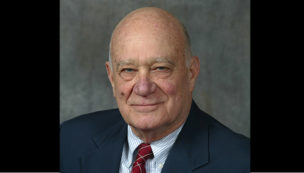Emergency Rooms are not places that any of us look forward to experiencing.
Yet, those of us who live on the North Shore of Long Island are fortunate to have among the best E.R.s in the world.
As I proceed in my ninth decade, I have had my share of various E.R. experiences.
I came away from my most recent emergency “visit” with a keen appreciation of the range of medical folks and the attentive effectiveness of Winthrop’s E.R. and its hospital services.
During 14 hours in the Winthrop E.R., I was given an early diagnosis of pneumonia and a “baby heart attack.”
I had experienced chest pains in pre-dawn hours and arrived at the E.R. at 10 a.m.
Although I was not wheeled to a regular room until midnight, what transpired during my first 14 hours in E.R. left me, in retrospect, with enormous admiration for the steady procession of folks who tested me, medicated me, inserted two IVs, and who bolstered my spirit along the way.
Only after I left the hospital five days later did I begin to regard my treatment in the E.R., and then in my room, as a kind of humanistic version of a Henry Ford “Assembly Line.”
My experiences resembled a mechanized assembly line in terms of the continuing procession of people with tests and treatments.
As patient and health amateur, I had no idea of what the sequences were and why particular treatments were being administered at designated times.
However, the flow of attentive services (with seemingly interchangeable operators) impressed me in terms of organizational competence, combined with personal attention. The dozens of doctors who worked with me along with dozens of nurses and other medical staff provided ongoing, seamless approaches to patient treatment.
In retrospect, I was ever more appreciative of how the “hand-offs” from one staff person to another kept a focus on me, on what had previously been done, and on what was in the works.
If I had more presence of mind while enduring my health distresses, I would have wished to be more attentive to the names of the few score Winthrop personnel who assisted me. However, the “emergency” designation in E.R. signifies that those of us who are the patients are likely to have more distracted attention than acute mental consciousness.
Dr. Goldman was the supervising E.R. doctor when I arrived; he gave me early diagnoses and kept me posted on next steps.
But my E.R. stay eclipsed his work day, and a succession of other folks worked with me during those first 14 E.R. hours.
All of them introduced themselves and were warmly supportive. I wish I could credit each of them individually, for their professionalism and for not losing sight of the personal for patients.
Their work was all the more impressive because I was alert enough during my E.R. time to see many of the folks who assisted me pushing carts with computers and medications as they moved throughout the very large E.R. area from patient to patient.
While many patients (several older than I) were positioned in open E.R. spaces, I was fortunate to spend my E.R. hours in one of the “alcove” type spaces (an area about 10 feet by 8 feet, with curtain divider from the next alcove and a curtain at its entrance).
Privacy becomes a minor concern in a hospital but, with my spouse at my side the entire time, it was comforting to have a sense of one’s own space.
From that location, I had a continuing view of the medical folks wheeling their units from patient to patient.
My E.R. stay was extended as I was wheeled from place to place for various tests. As my chest pains diminished I appreciated having a TV screen mounted above the entrance to my alcove.
For my first nine hours I had no interest in watching TV or in reading (one of my favorite activities).
But as NBA game time approached, and as I was feeling better, the chance to watch the basketball game was comforting – so much so that I implored a staff person who came to bring me to an assigned room to wait for six minutes until the close contest ended.
When I arrived in my room, the excellence of medical care that I had experienced in the E.R. began immediately and was sustained for several days.
Once again, I wished I had noted the names of the succession of staff folks who assisted me. I especially appreciate Angelina, my first main nurse, and Jen, my last nurse, who oversaw my hospital discharge.
From Angelina to Jen, a host of Winthrop’s medical staff, from doctors to nurses to aides, deserve the highest praise.
So, too does young Christopher who delivered three meals a day to me, always with a bright countenance.
When I wasn’t eating he cheerfully offered to find food alternatives (during my first day in the room I could eat nothing, and felt awful, perhaps the result of the antibiotics that were streaming through my body).
Here is a bit of advice for future hospital patients.
Christopher, on the first day, gave me an alternative menu from which I could make approved selections if I was not satisfied with the daily options.
Unfortunately, I misplaced it, never asked for another copy, and regretted not having more eating options.
Food is the least of hospital concerns, although comfort eating has always reduced stress for me (whatever its negative trade-offs).
The very supportive Winthrop staff made more endurable the limits on my mobility because of IVs and other attachments to my body, as well as the difficulty of getting any sustained sleep.
Now, at home for nearly two weeks, I am grateful to Winthrop for the comfort I feel.
I have been given a boost to consider the next steps in cardiac treatment (particularly after the initial view of a “baby heart attack” was upgraded to a full-scale heart attack).



